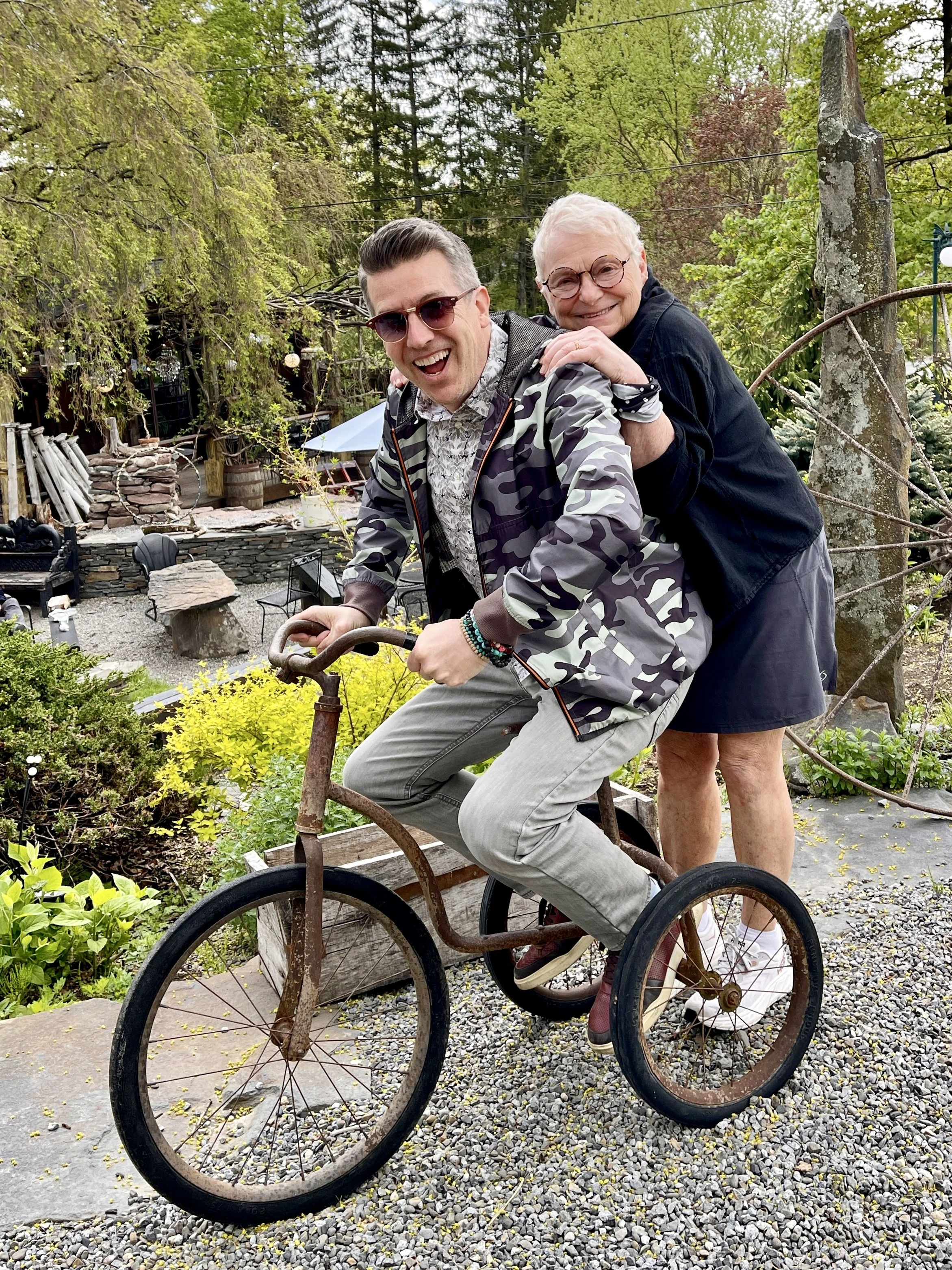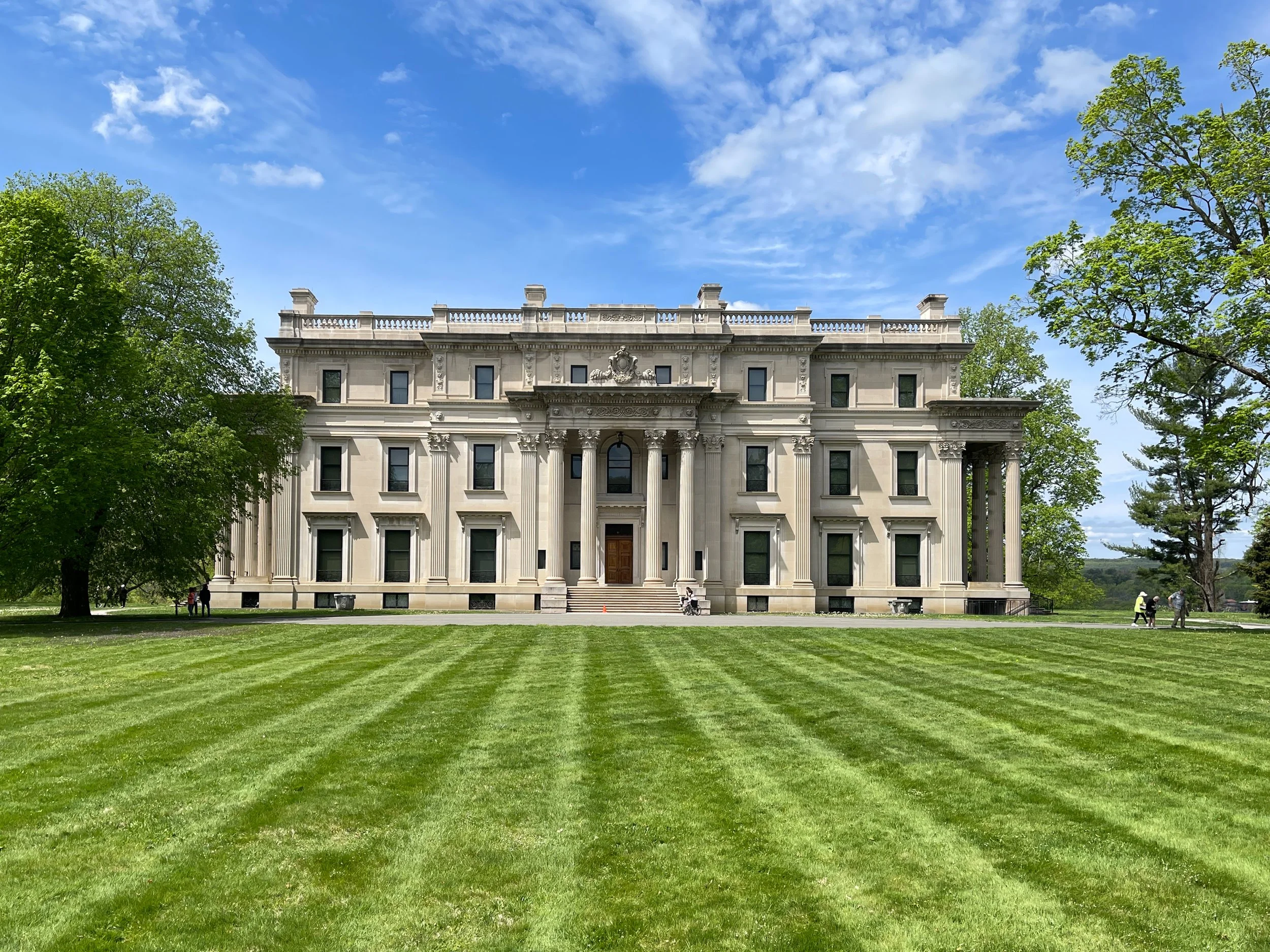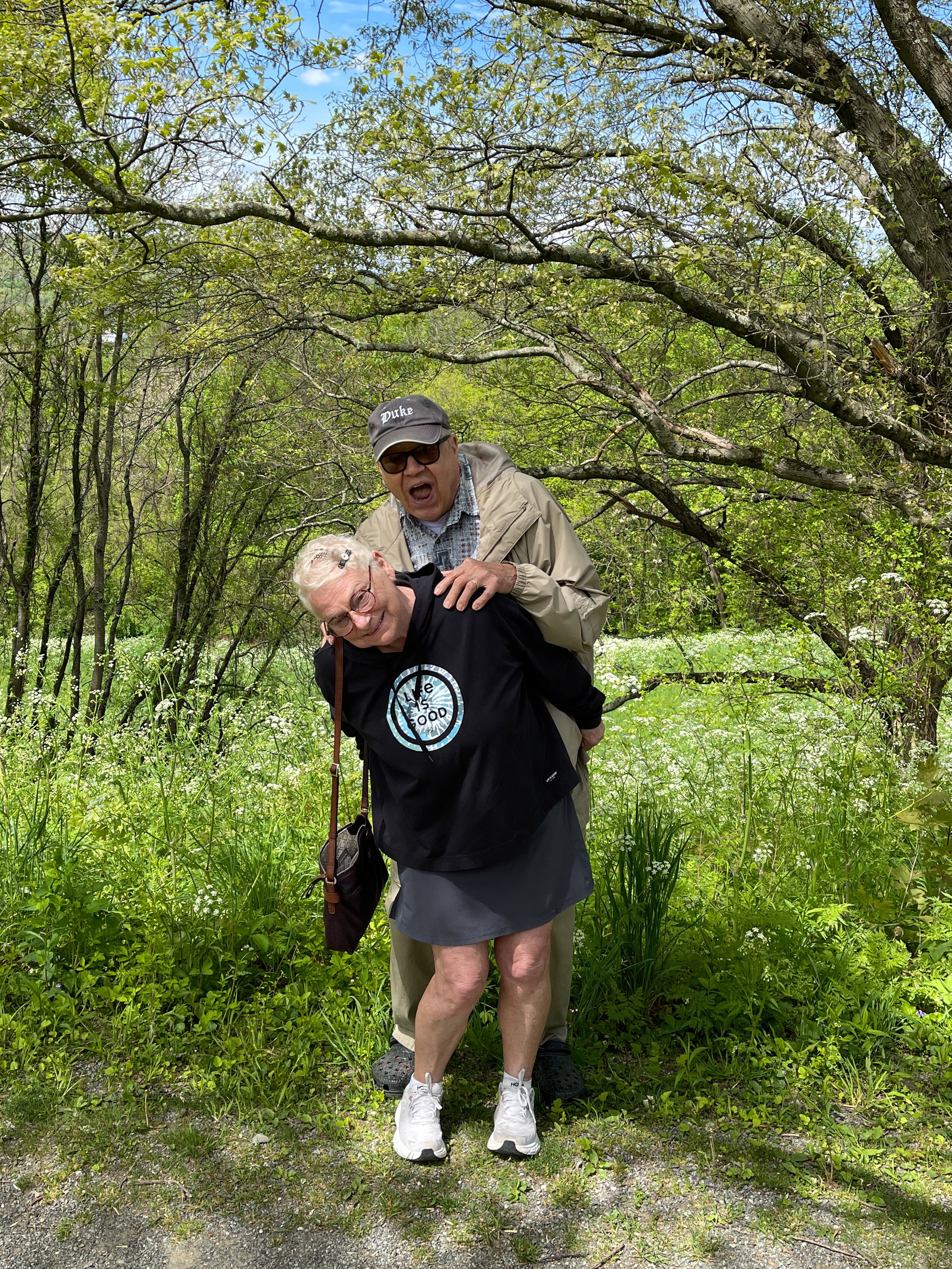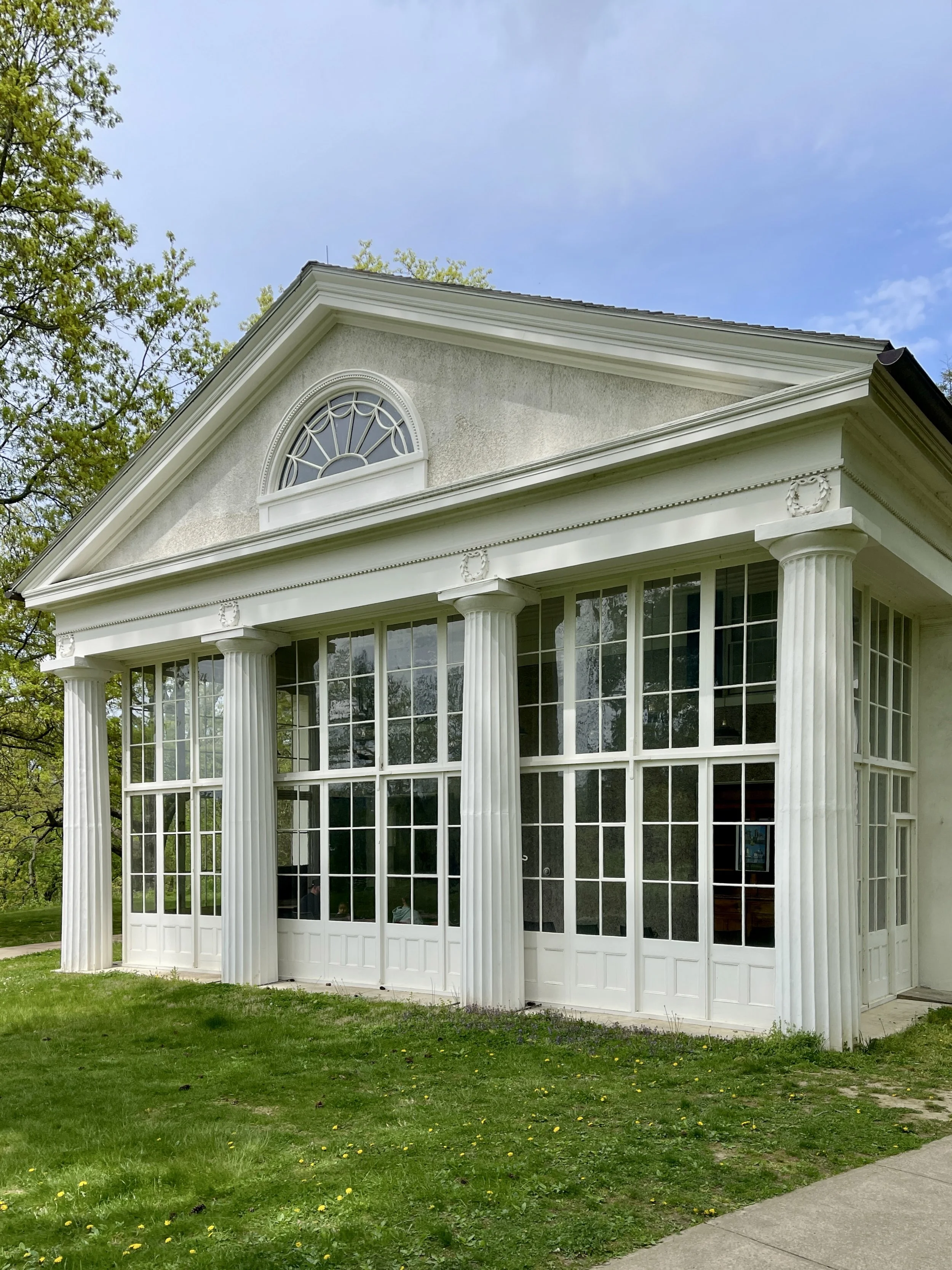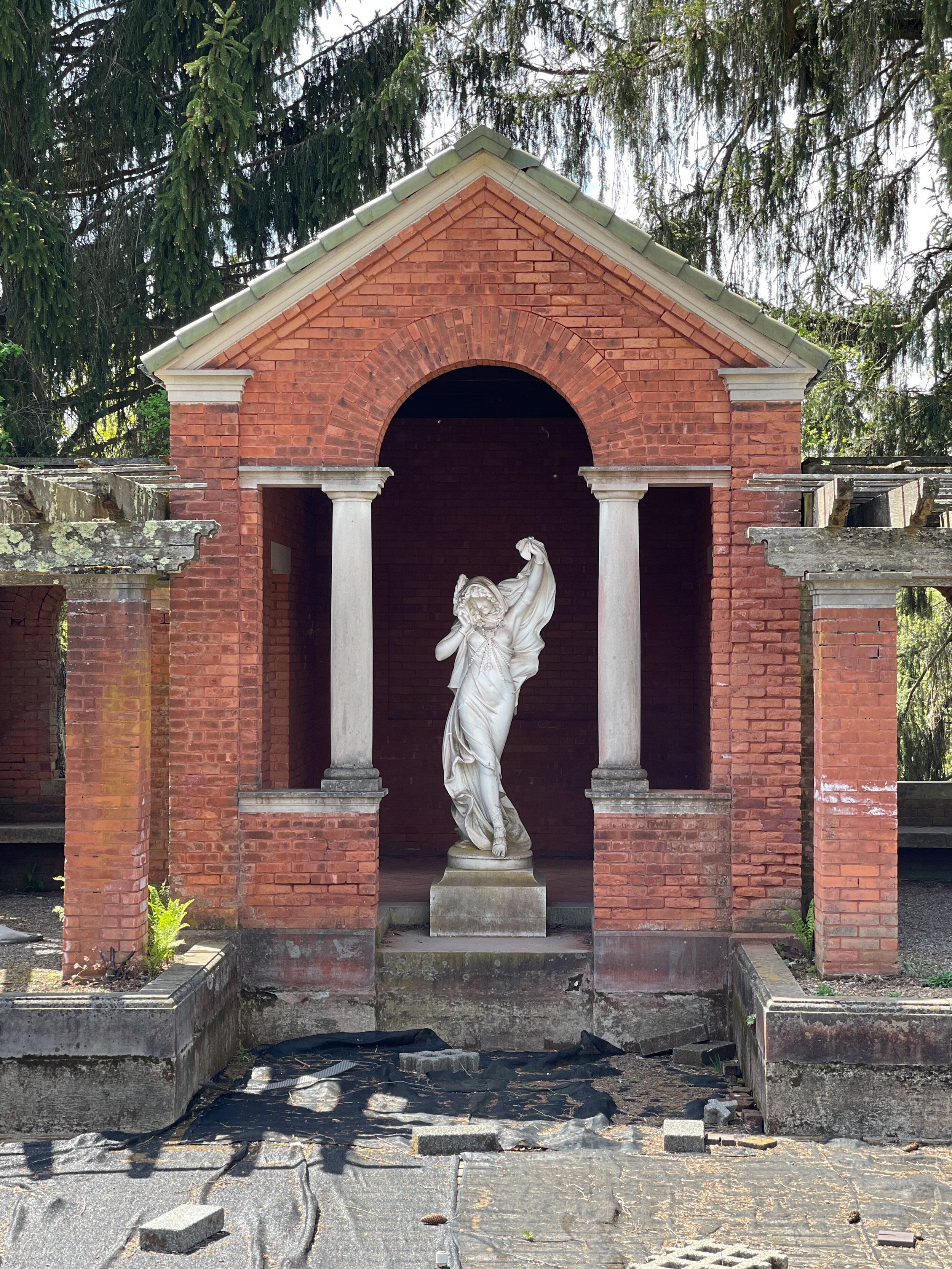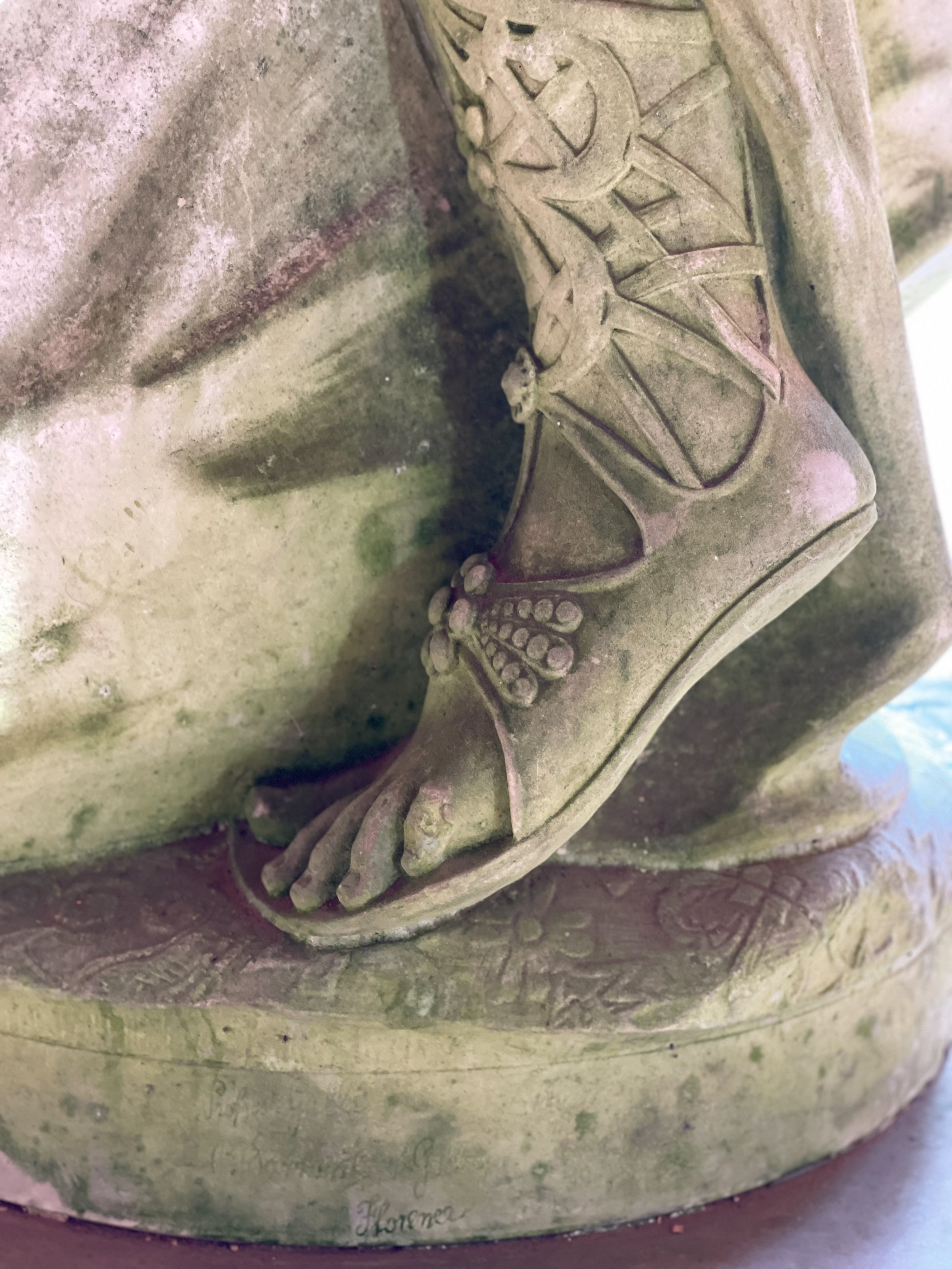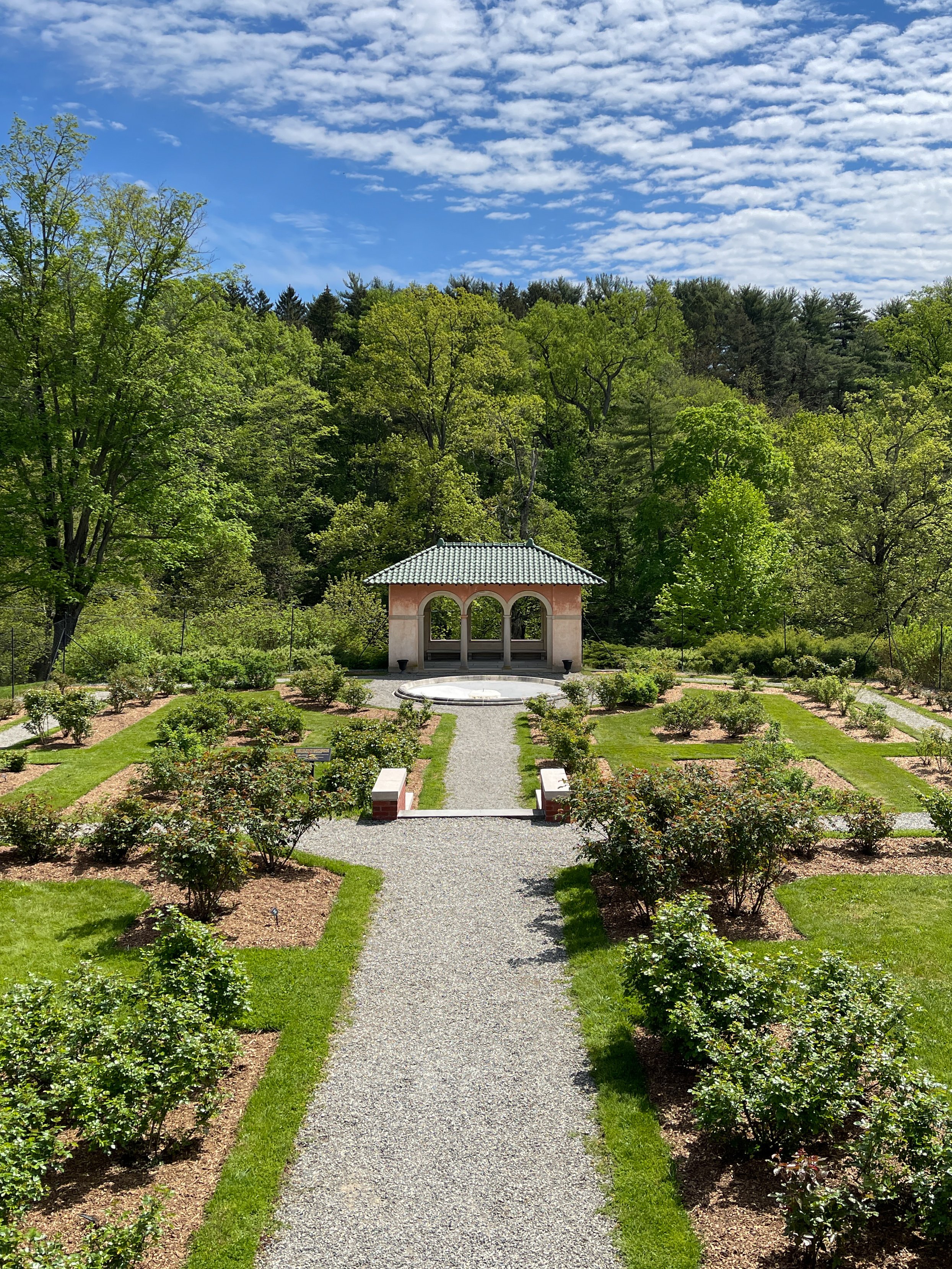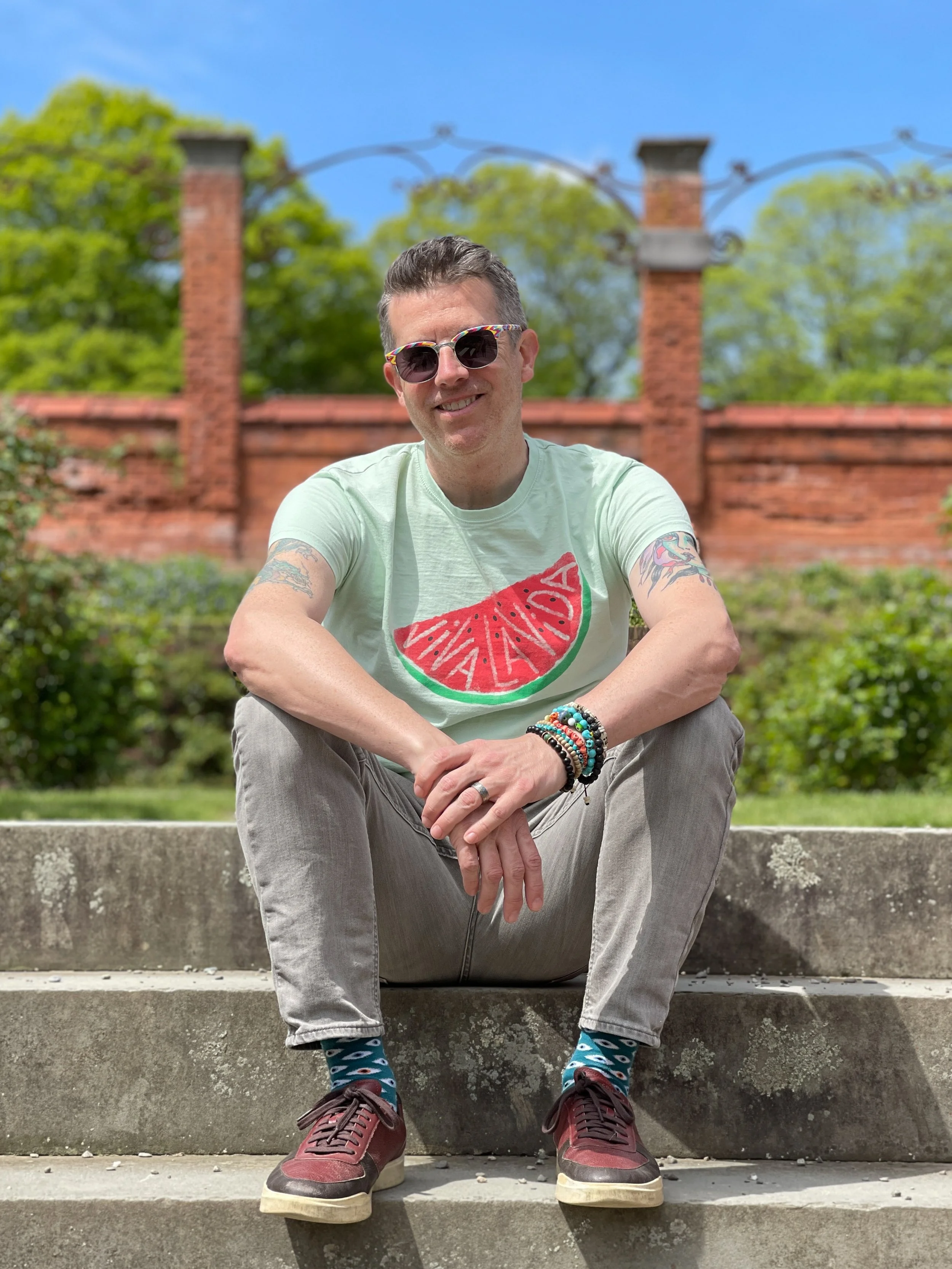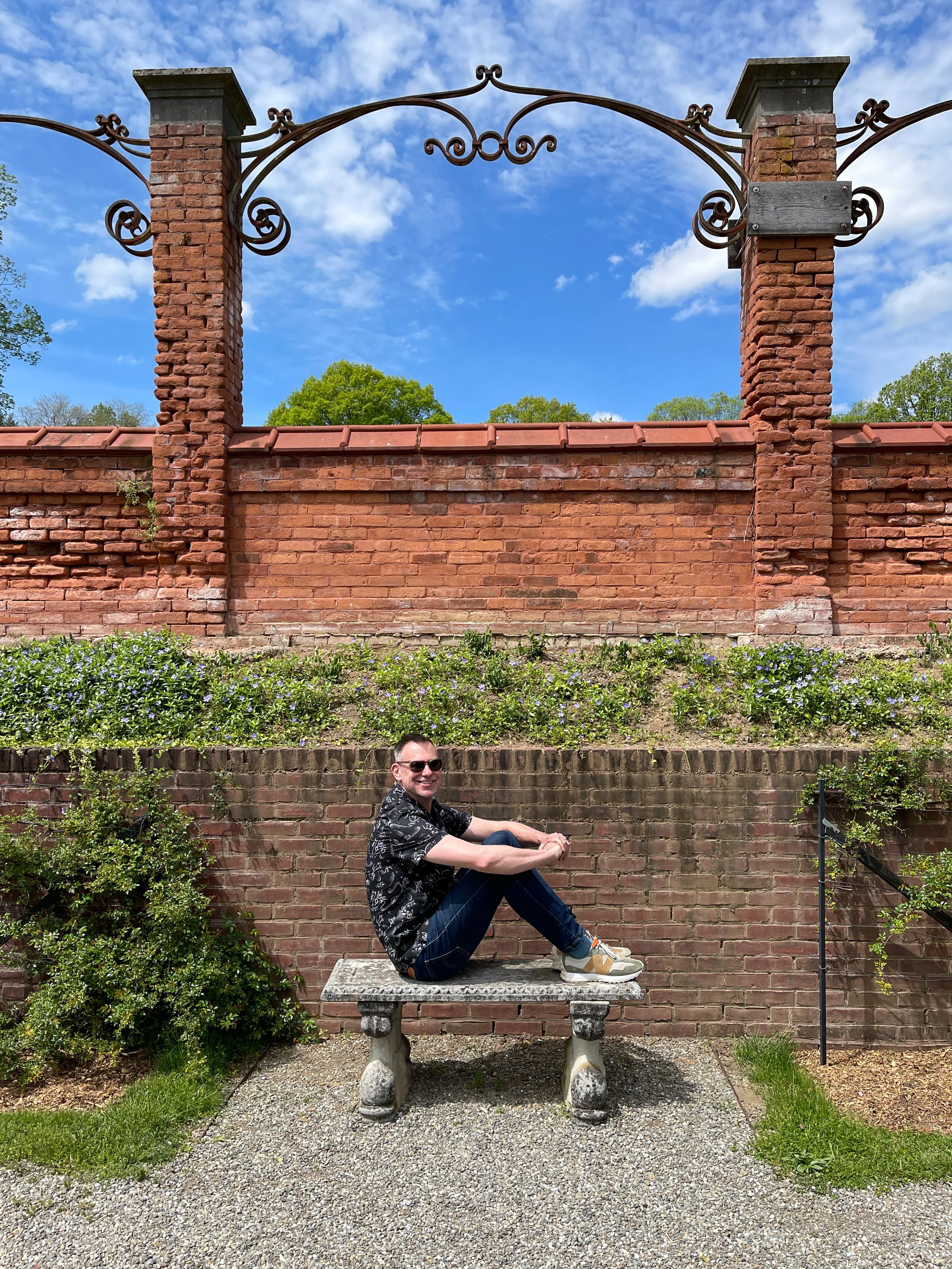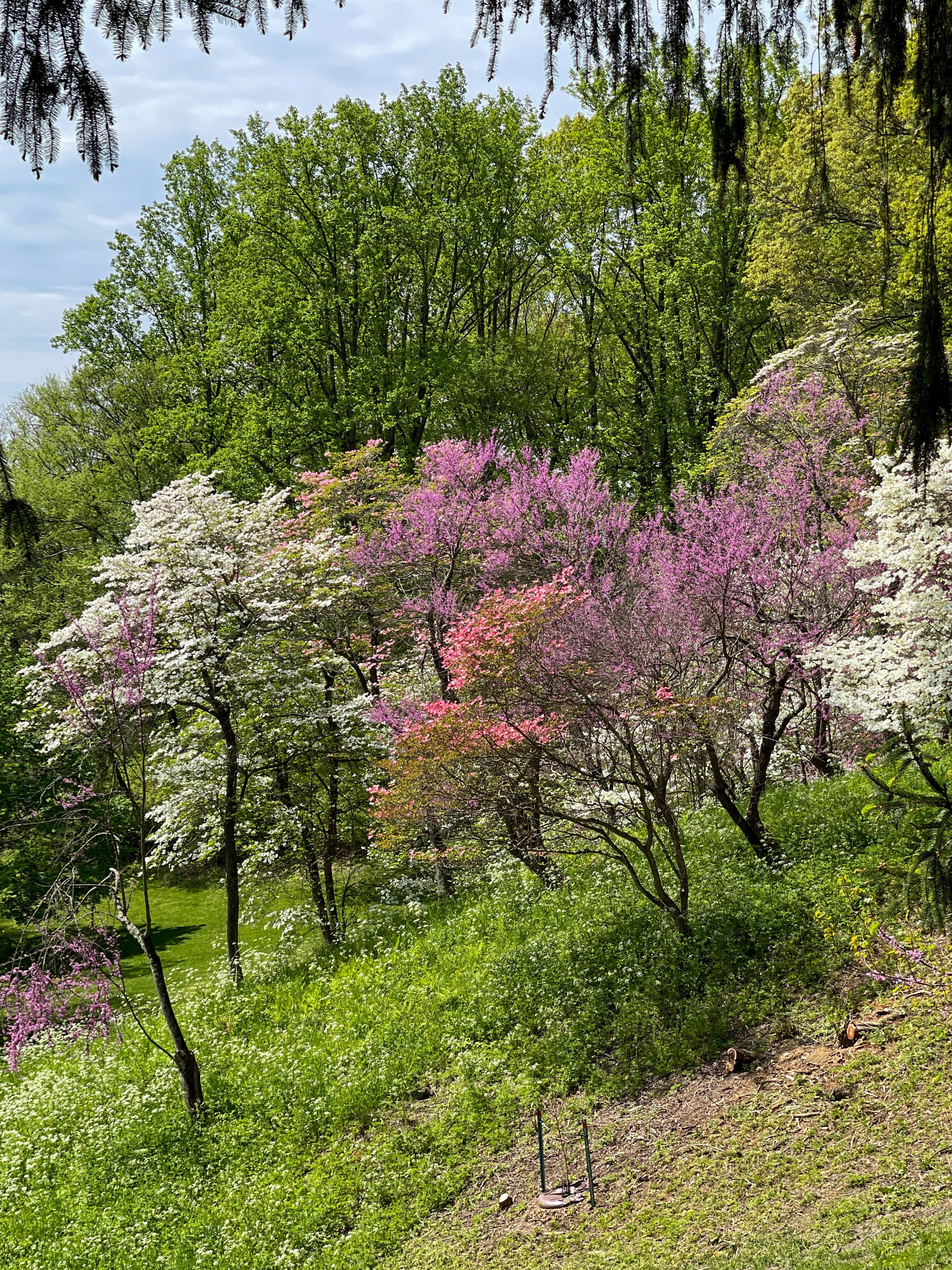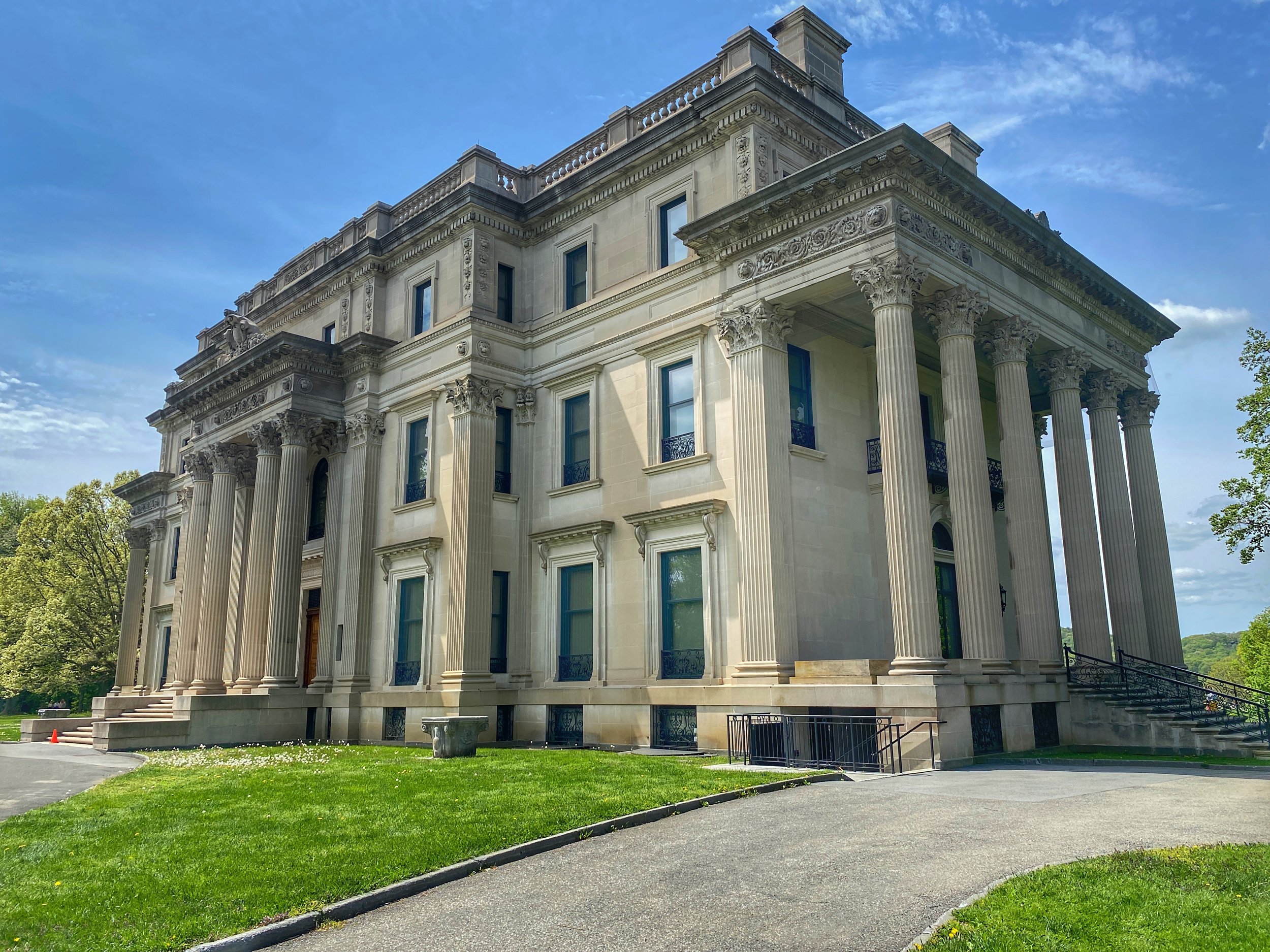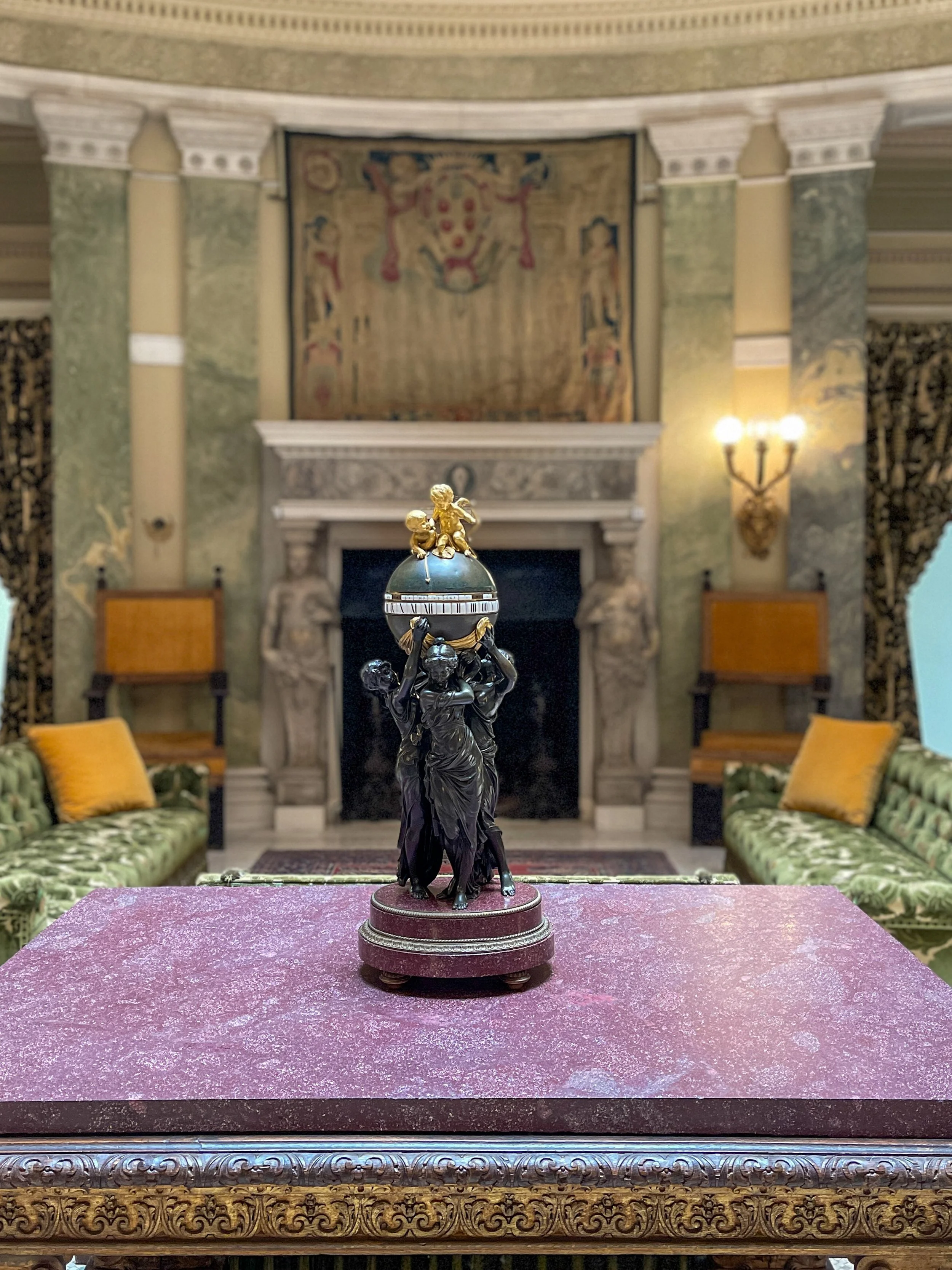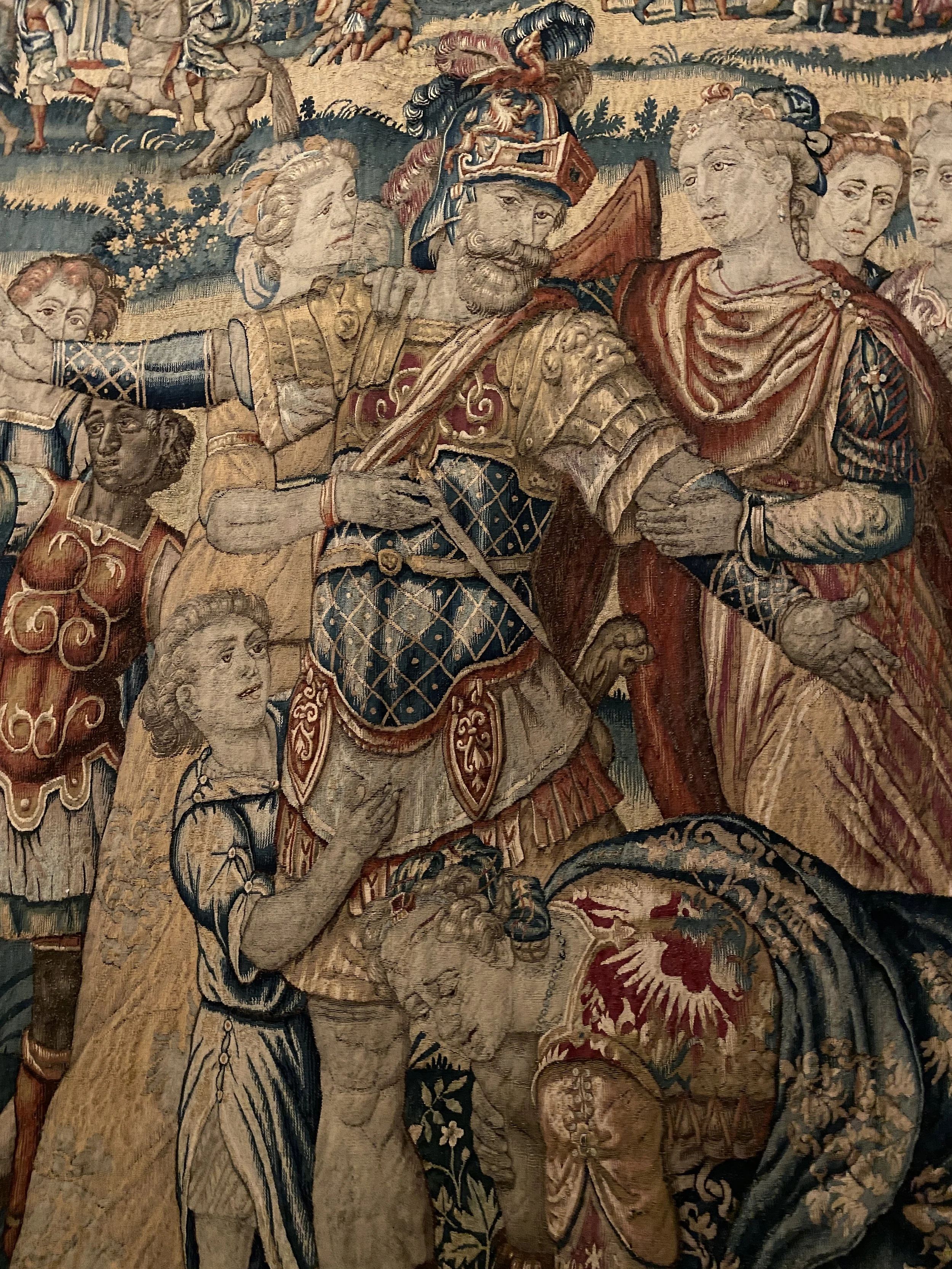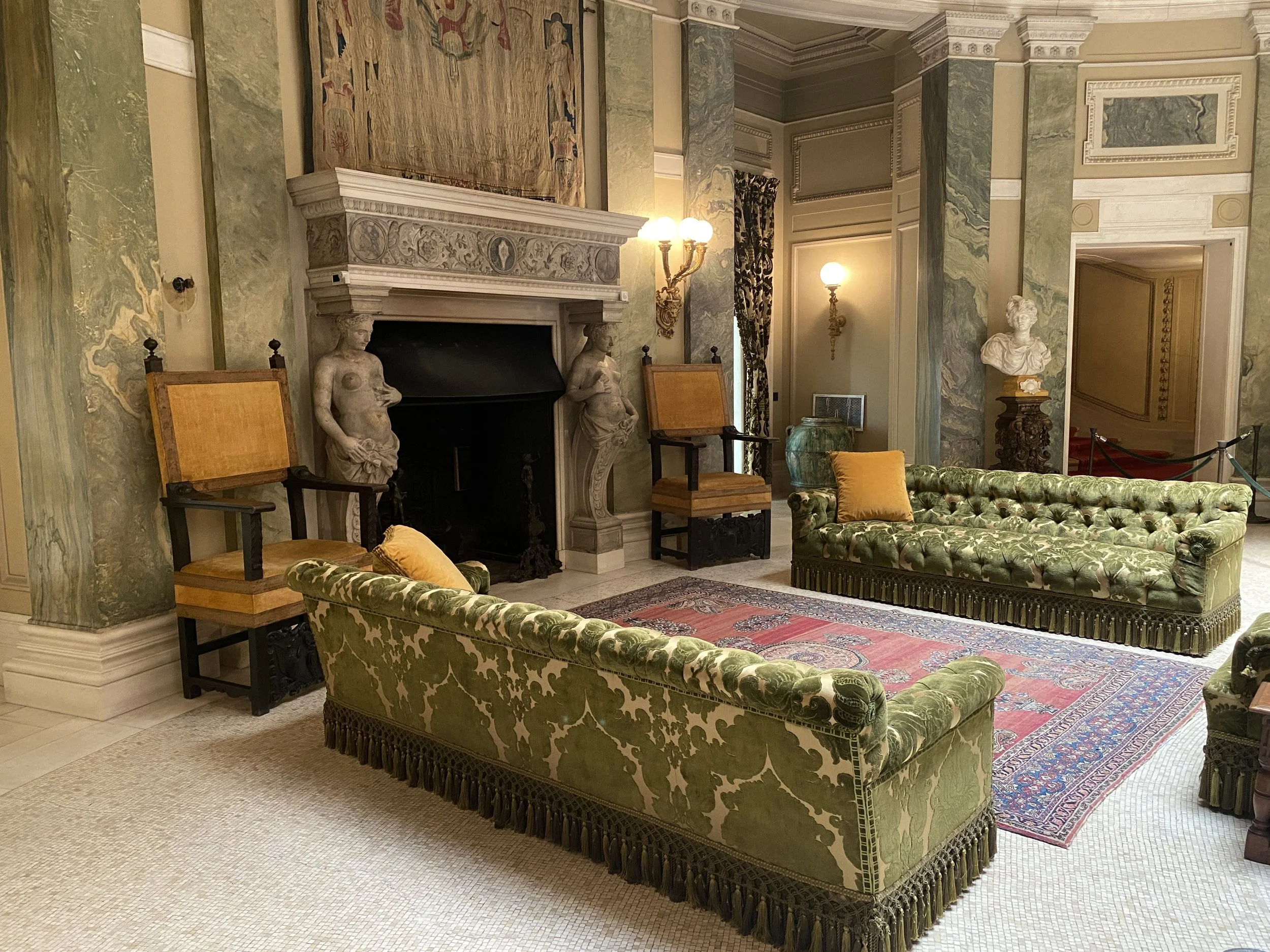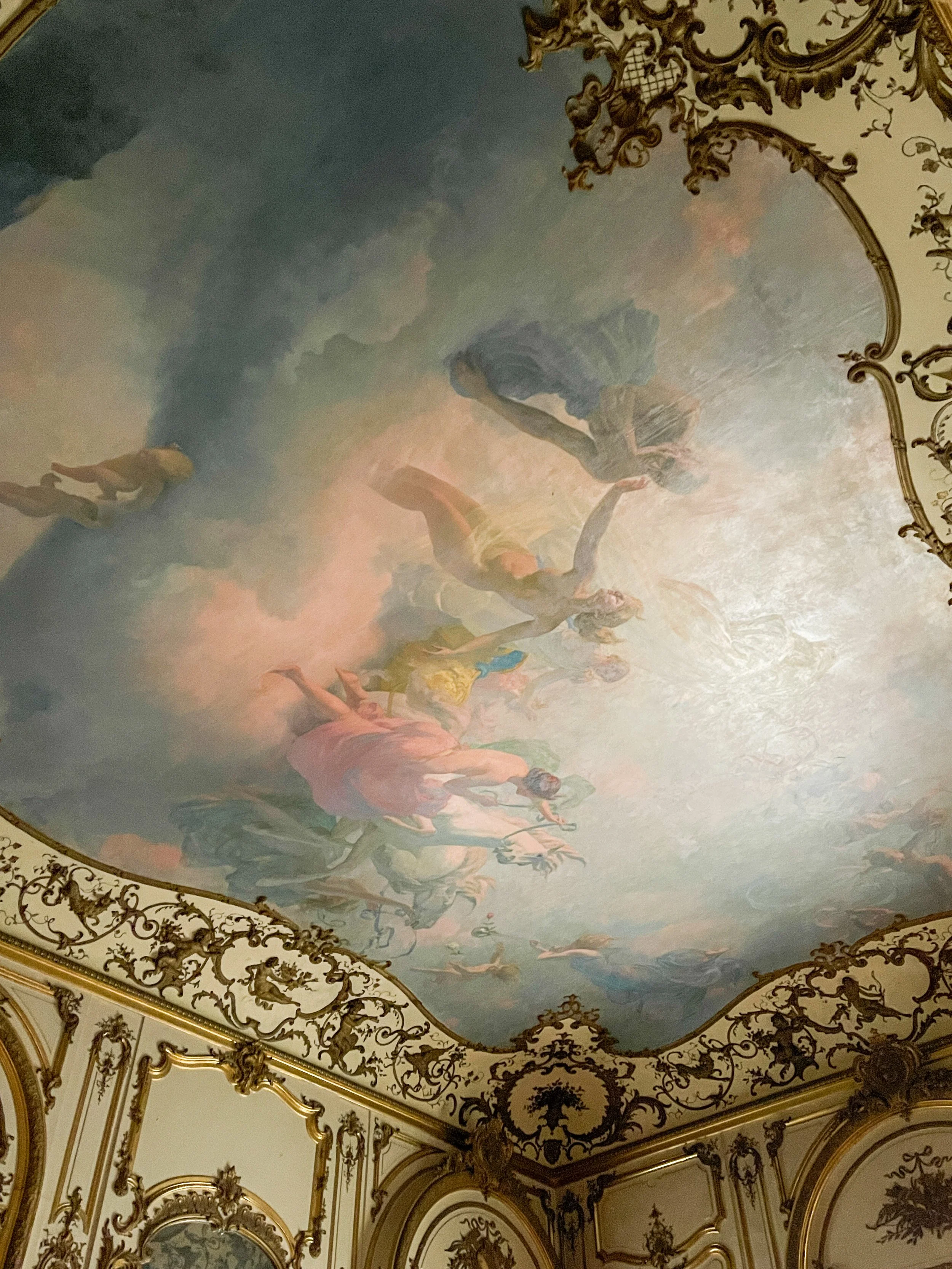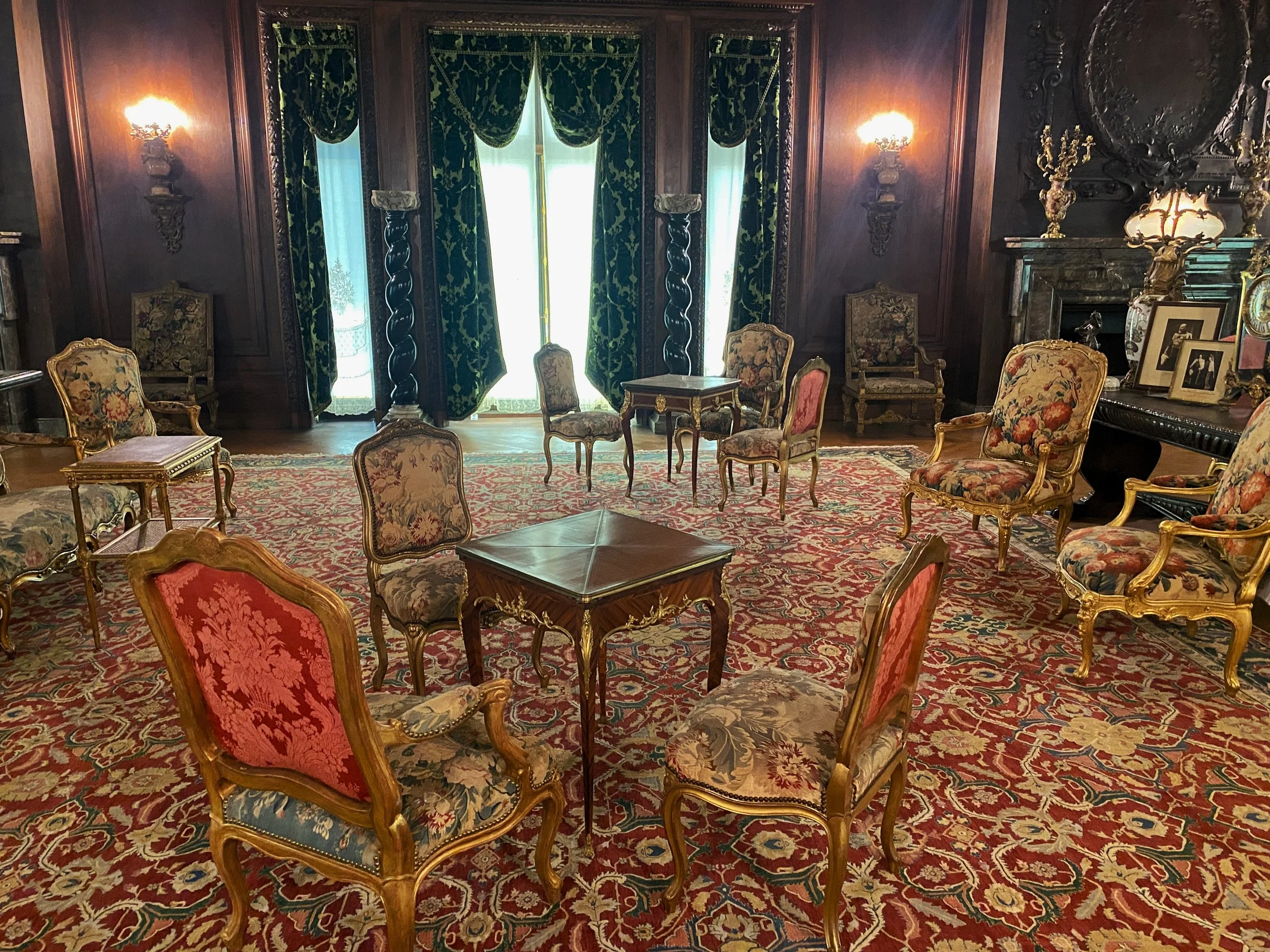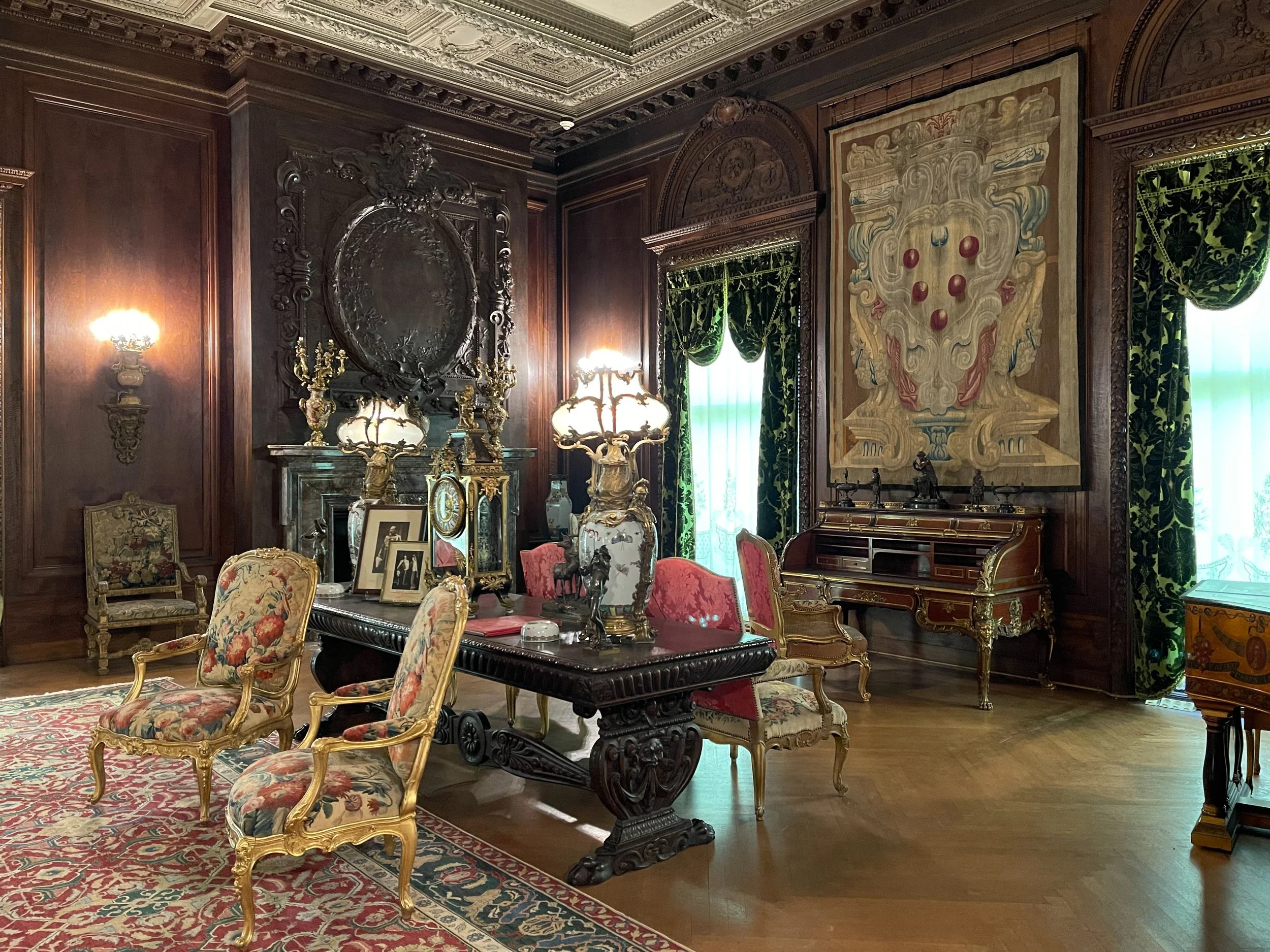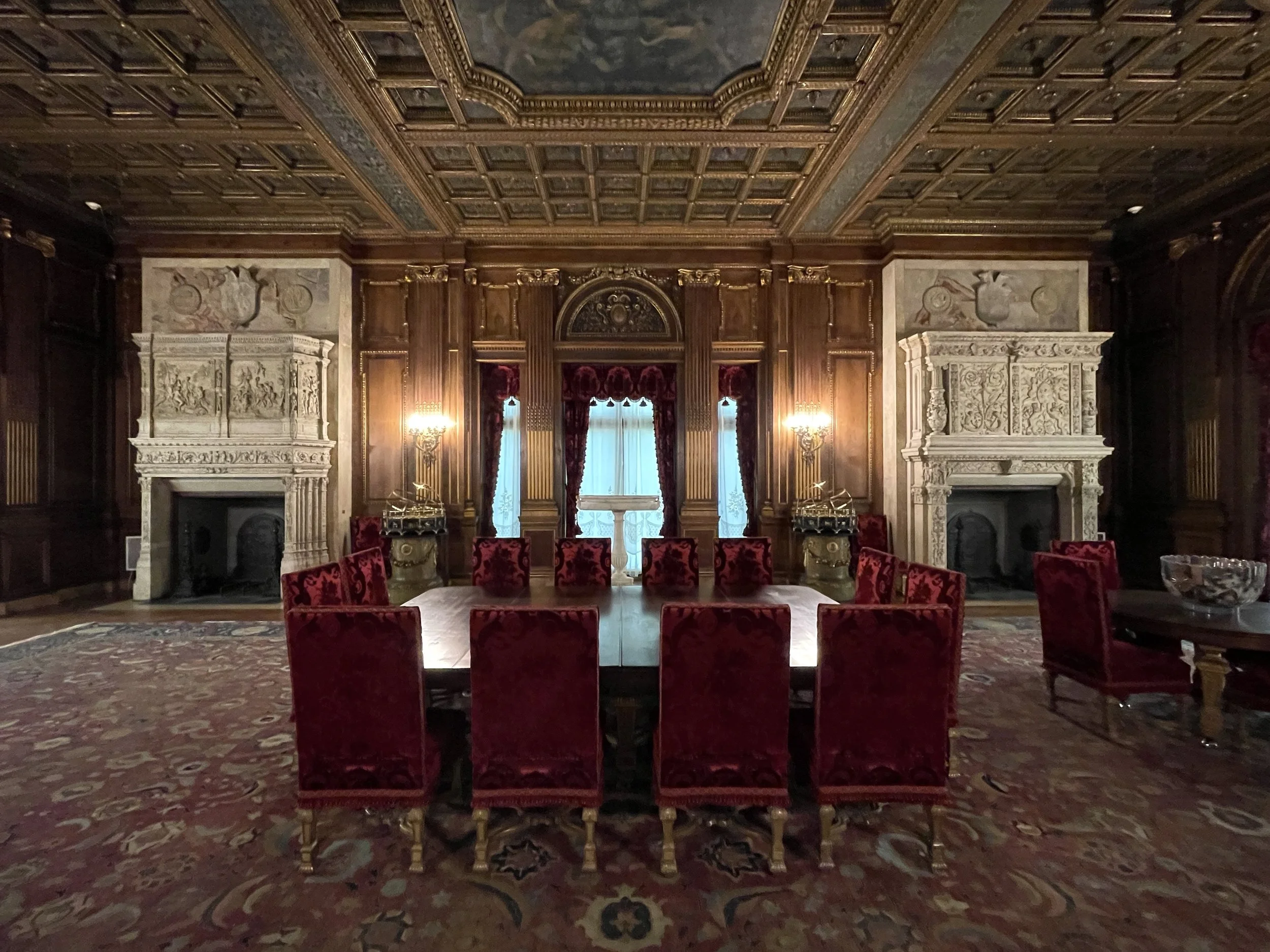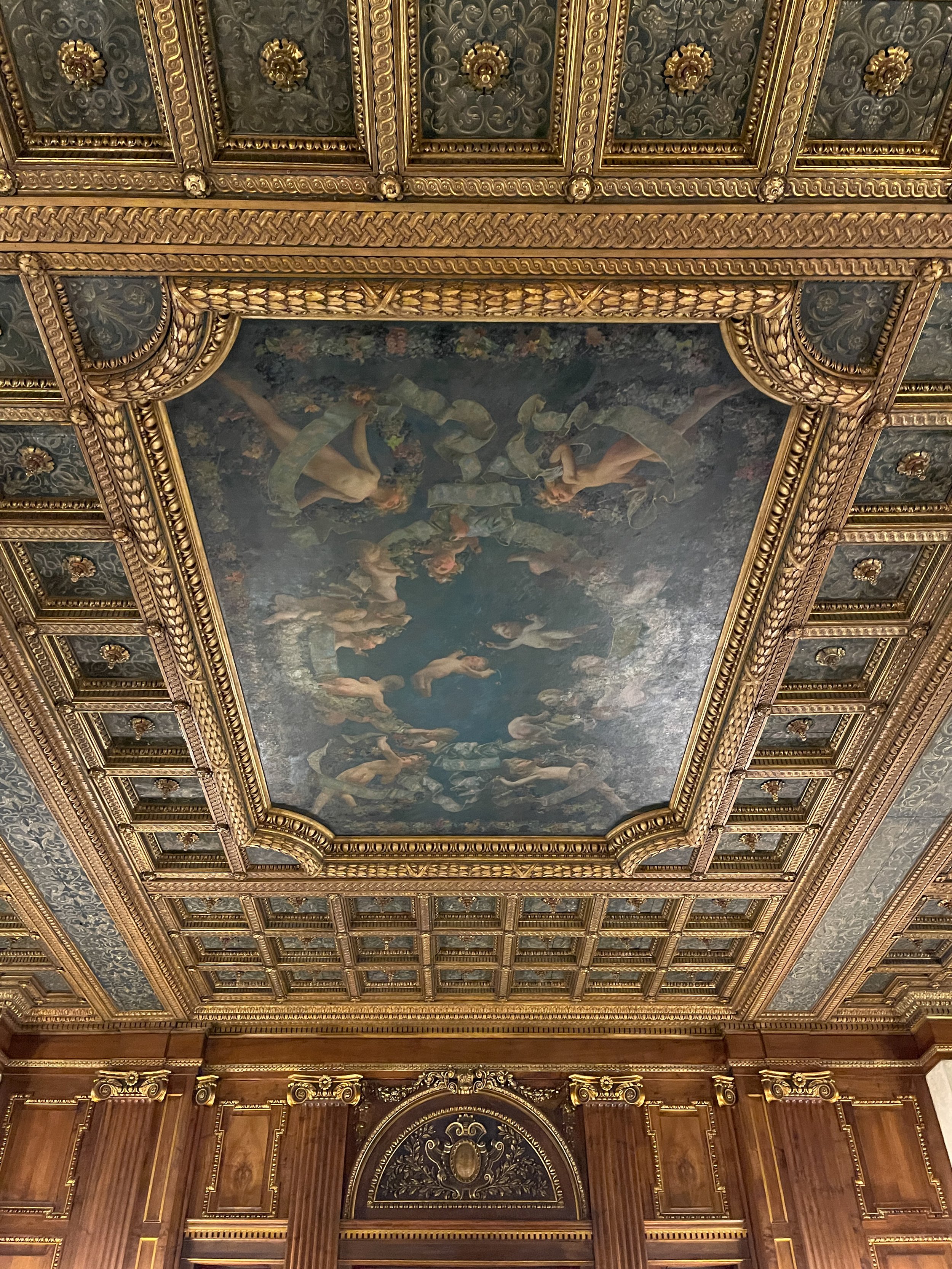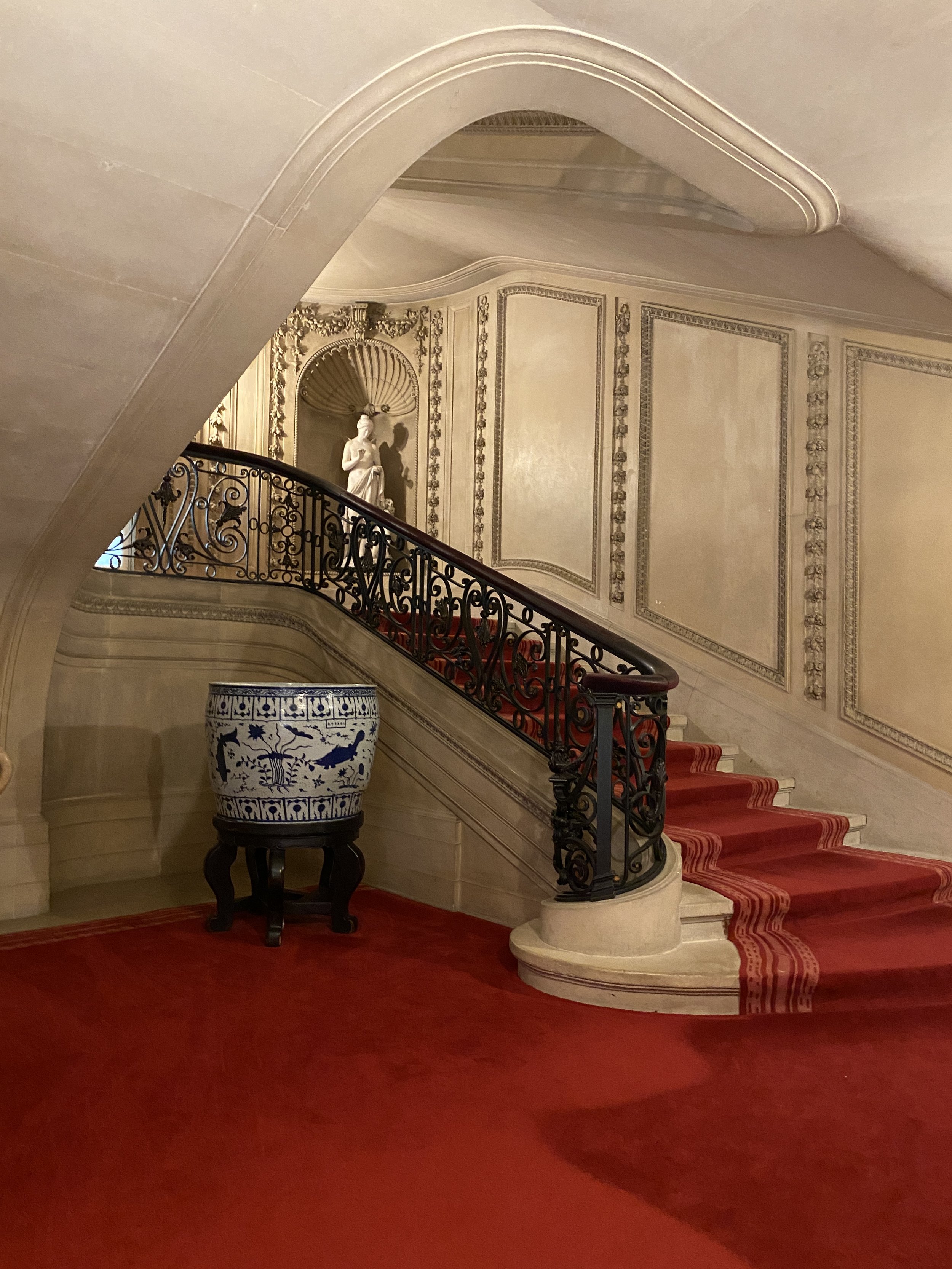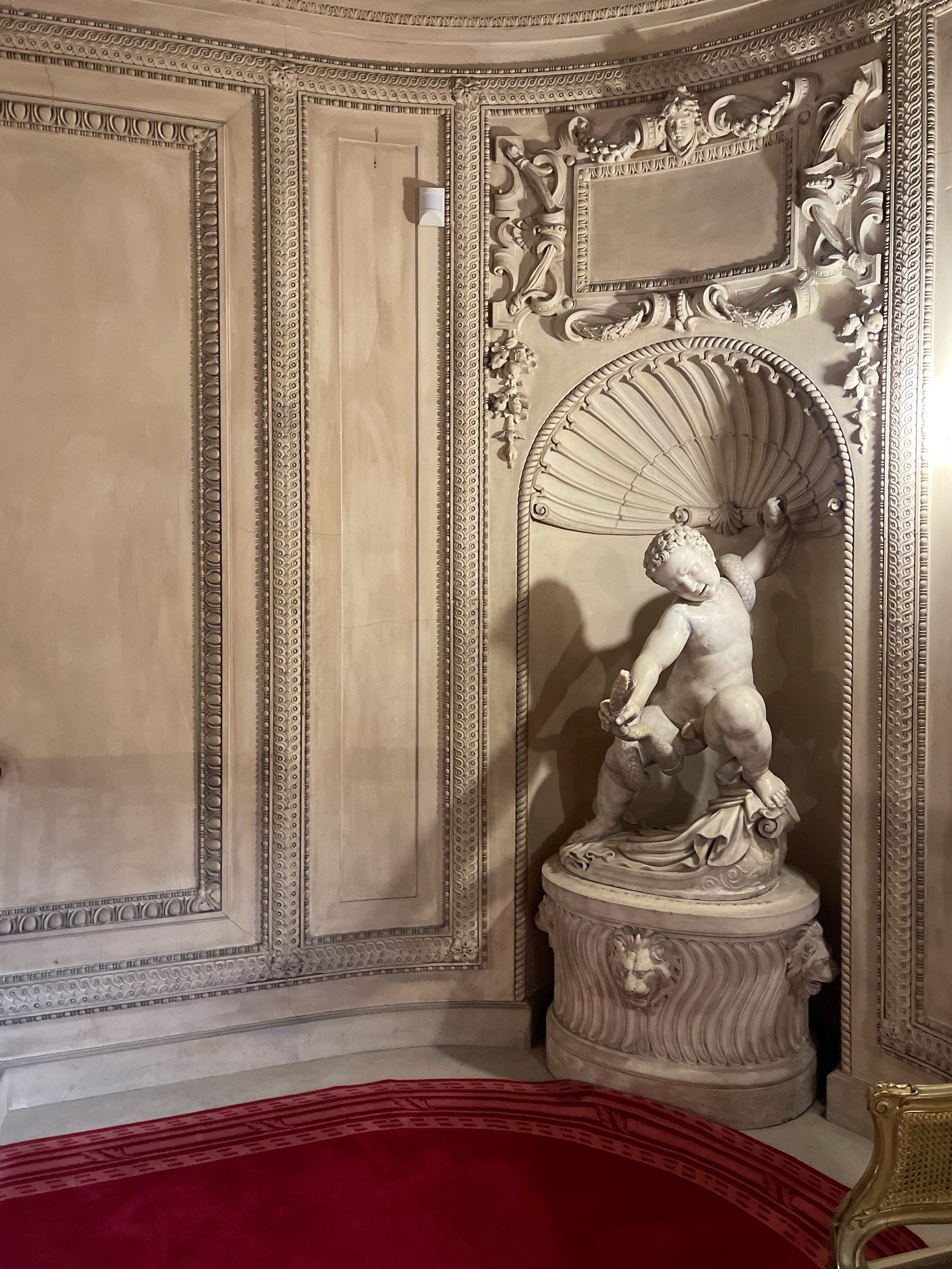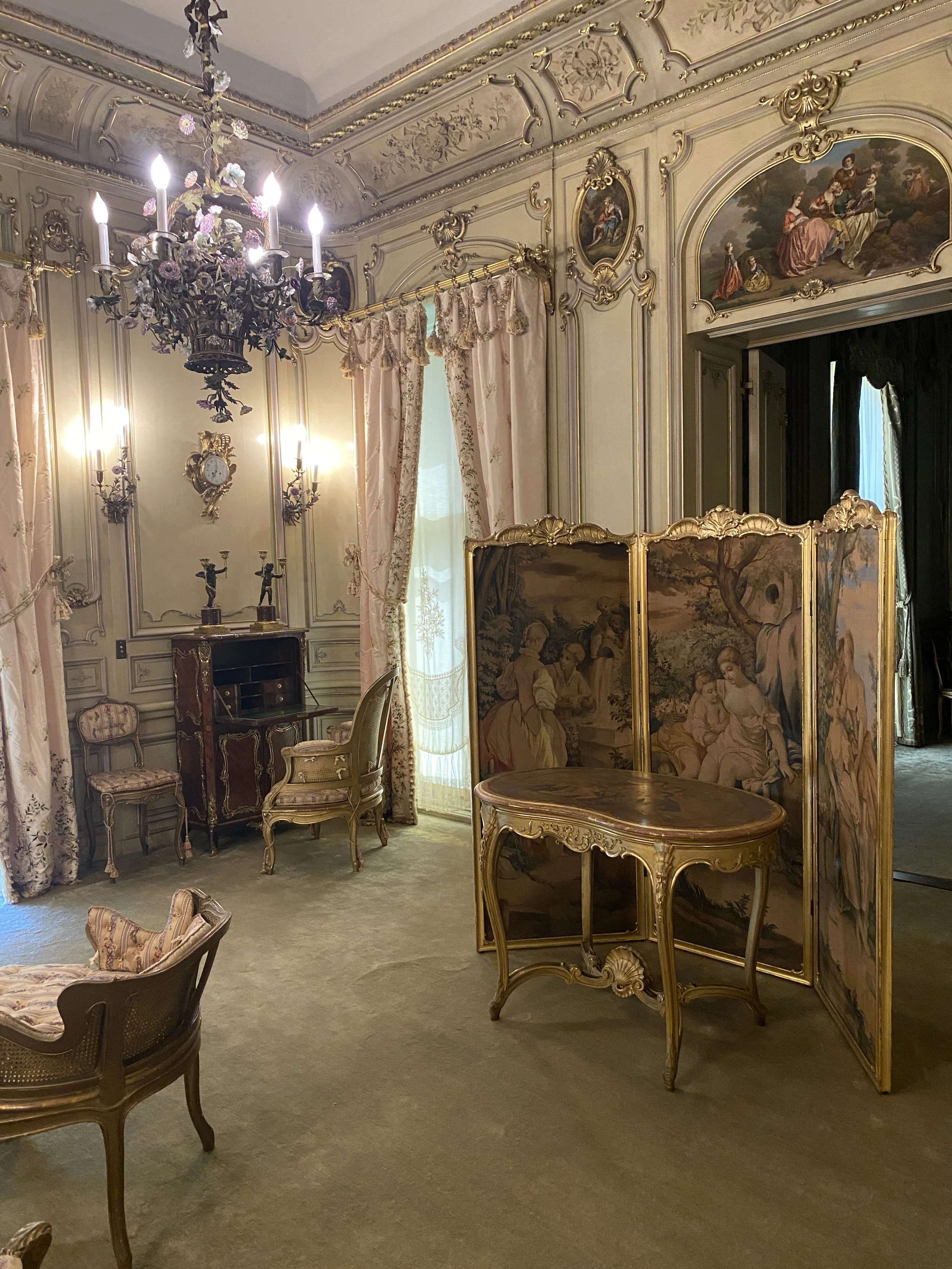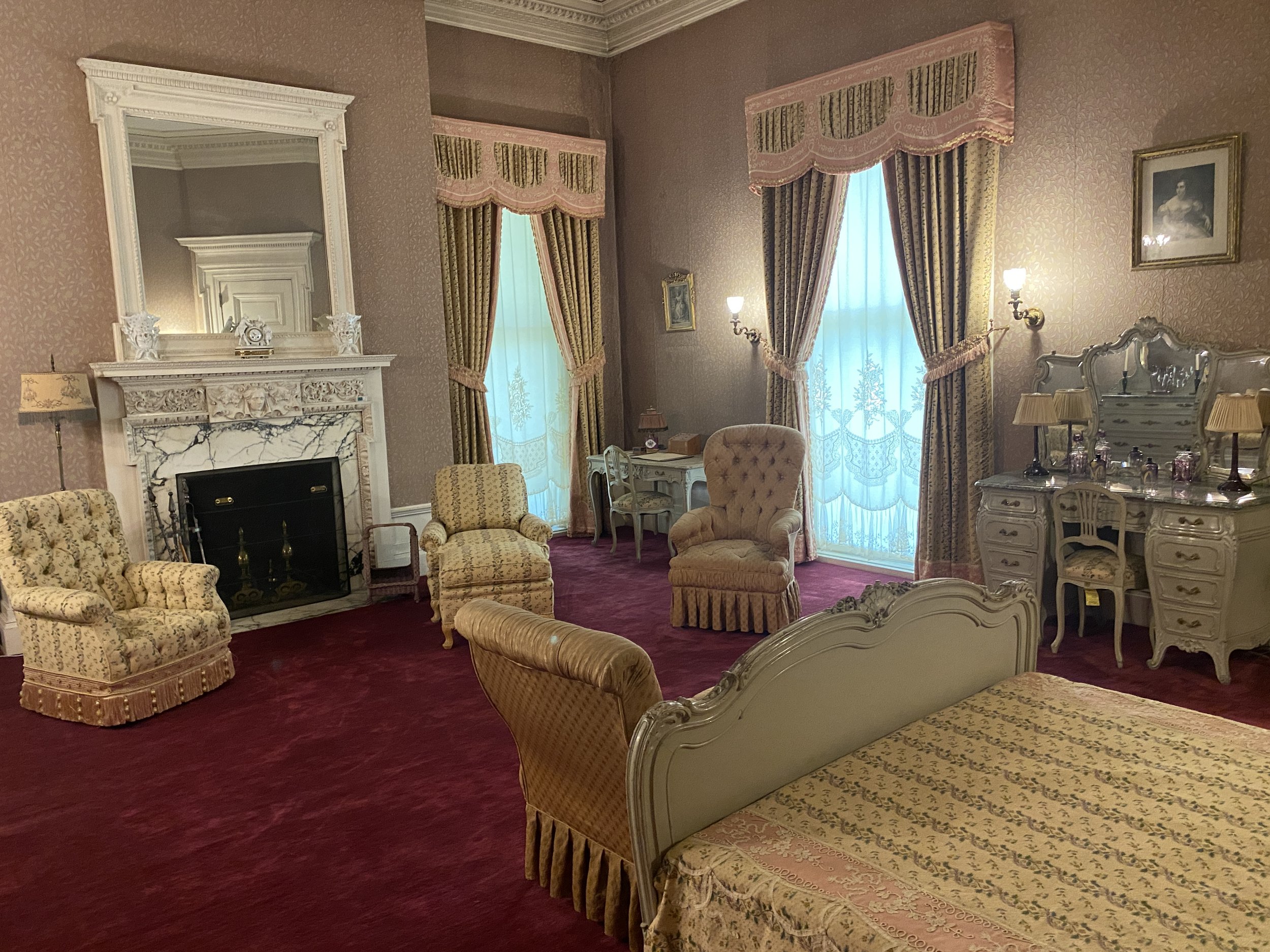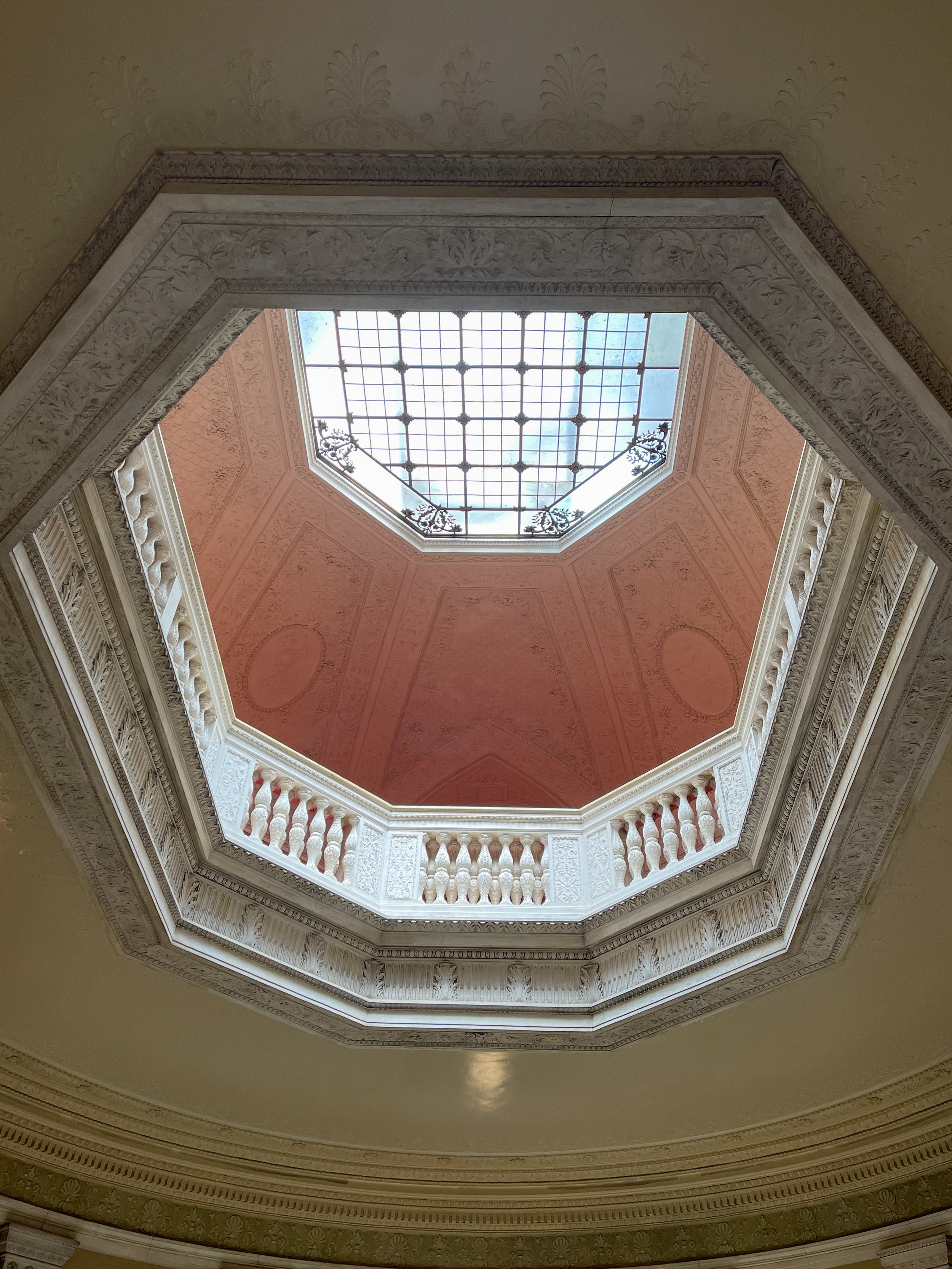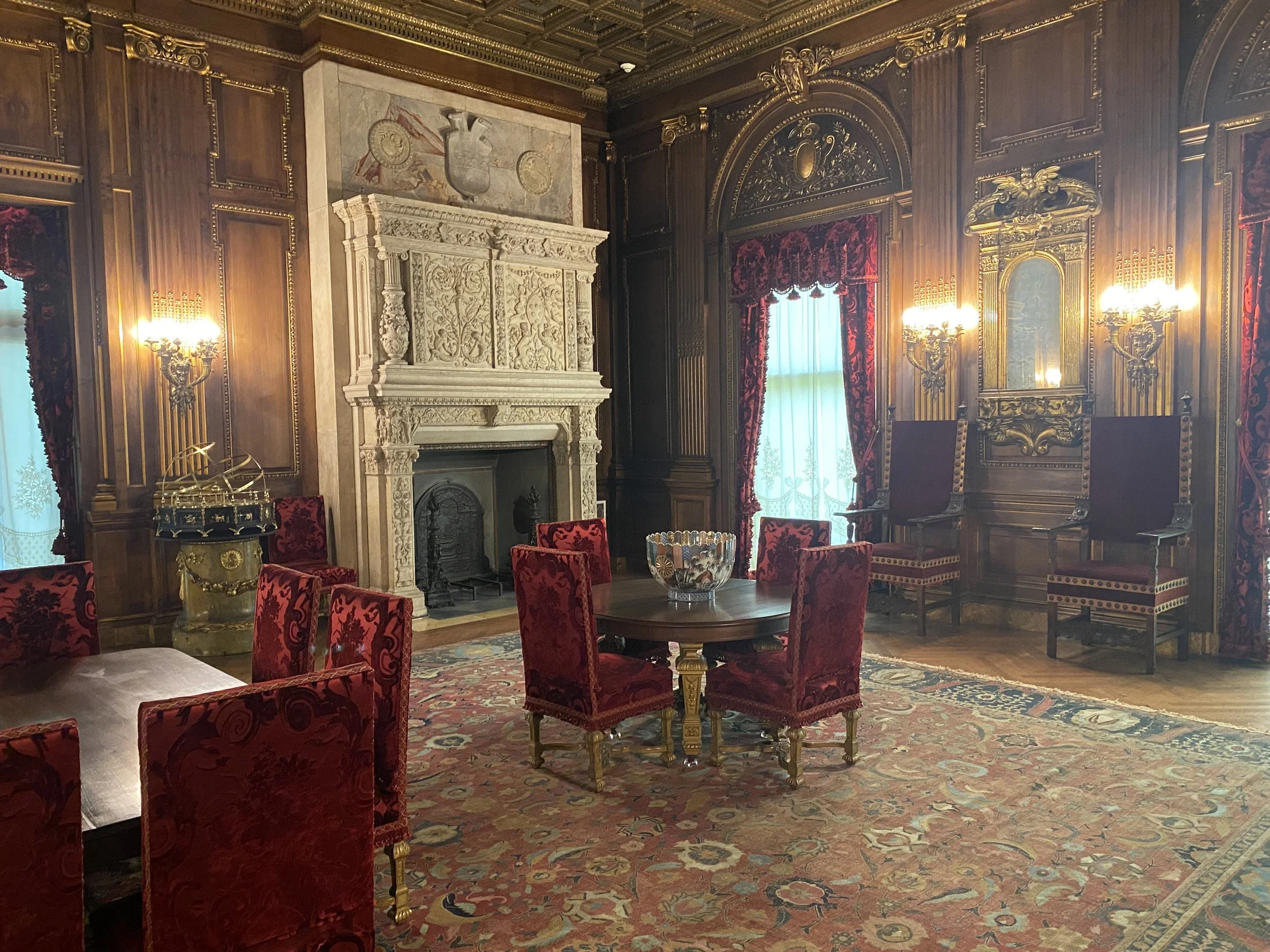Woodstock unplugged: The site of the 1969 music festival is an artsy, laidback town in the Hudson Valley, where cool shops, great eats and local treasures abound.
A glimpse of the adorable backyard of Tinker Taco along Tannery Brook in Woodstock, New York
When you hear the name Woodstock, do you picture Snoopy’s little yellow sidekick from the Peanuts comic strip, or do peace-loving hippies, patchouli and that legendary rock and folk music festival held in the summer of 1969 come to mind?
Well, here’s the twist, man: Technically, the historic lovefest didn’t even happen in Woodstock! It actually took place on a 600-acre dairy farm, in the neighboring town of Bethel, about 60 miles southwest. Although it was a success in terms of cultural significance, it was a logistical failure — there wasn’t enough food or enough toilets. But according to Wally, they were high, they were hippies, and they couldn’t have cared less.
Despite this misconception, I imagine Woodstock had a better ring to it than Bethel, and the name stuck.
Papa, Wally and Duke on Tannery Brook Bridge, enjoying their time in Woodstock, New York
Woodstock’s laidback, artistic spirit continues to evolve and thrive, and this small town, nestled in the foothills of the Catskill Mountains along the Hudson River, turned out to be exactly the vibe we were looking for during our four-day Hudson Valley weekend.
Read on for our list of our favorite spots along Mill Hill Road and Tinker Street in the charming burg of Woodstock, including a couple of recommendations on where to stop and refuel along the way.
Tinker Street and Mill Hill Road
The main thoroughfares of Woodstock are Tinker Street and Mill Road, a walkable stretch lined with locally owned shops, restaurants, galleries and other businesses catering to residents and visitors alike.
The Mud Club
We started our day at the Mud Club (a nod to the famously muddy aforementioned festival in Bethel). We headed straight to the hulking brown barn to order four of their Montreal-style bagels from the service window.
Established in 2017 by brothers Nicolas and Gray Ballinger, along with their father Doug, their irregularly shaped hand-rolled bagels are briefly poached in honey-sweetened water and baked in a wood-fired oven, resulting in a bagel with a crisp exterior and a denser chew than a New York-style bagel.
The Mud Club vibe? Think rustic yet quirky mountain lodge with a side of artisanal coffee. Their rotating selection of single-origin beans, sourced from regions like Ethiopia, Kenya, Peru and Honduras, expertly roasted by Brooklyn-based Mud Club, are sure to satisfy even the most discerning caffeine connoisseur.
The Mud Club
43 Mill Hill Road
Bread Alone Bakery
You know what they say: Man cannot live on bread alone. But if we did — we’d be happy getting our sustenance at Bread Alone. Even though we had already eaten bagels at Mud Club, we couldn’t resist stopping at this local bakery. What started as an entrepreneurial endeavor by artisan baker and educator Daniel Leader in the early ’80s, with loaves being sold out of the trunk of the family station wagon, has grown into a trailblazing bakery with a big following, with additional locations in Boiceville and Rhinebeck.
This is the place to find an assortment of breads made with certified organic grains milled in Halifax, Pennsylvania, along with a pastry counter filled with sweet and savory treats. I purchased a chocolate caramel cake to enjoy later for Wally’s birthday, and trust me — it was a winner!
Bread Alone Bakery
22 Mill Hill Road
Candlestock
Beyond the white picket fence with yellow flame-topped posts at 16 Mill Hill Road is Candlestock, a one-of-a-kind family-owned business offering a wide selection of beeswax, drip and handmade candles in every shape, size and color imaginable.
Wally and I purchased a few hand-dipped tapers and were in awe of the impressive, rainbow-colored “Drip Mountain,” a towering 8-foot-high by 3-foot-wide wax creation dramatically lit by blacklight that has been steadily growing since 1969.
Candlestock
16 Mill Hill Road
The Golden Notebook
This small but impressive independently owned bookshop, named after the original owner’s favorite Doris Lessing novel, has been a local staple for nearly five decades. Among the shelves and tables, you’ll find a mix of popular and rare titles spanning both fiction and nonfiction, as well as a selection of signed books and graphic novels by acclaimed author Neil Gaiman. His writing often features darkly whimsical themes, complex characters and richly imagined worlds.
A section at the front of the shop is dedicated to local history and the surrounding Hudson Valley, with a selection that highlights the region’s storied past.
Whether you’re looking for books for adults or children, you’ll easily find your next read among the thoughtfully curated selections on display.
The Golden Notebook
29 Tinker Street
Timbuktu
You’ve probably heard or even uttered the phrase, “from here to Timbuktu” to describe a faraway place. Well, just a few doors down from the Golden Notebook is a shop with that name, filled with global and one-of-a-kind goods. You’ll find a diverse array of handmade home goods, pillows, quilts and jewelry by the shop’s owner, Jaime Surgil. Wally and I especially loved the whimsical aquatint etchings by New York-based artist Stephen Francis Duffy. Whether you’re browsing or buying, you’re likely to leave this boutique feeling inspired.
Timbuktu
2 Tannery Brook Road
Woodstock Leisure Syndicate
When Wally and I spotted a sign across the street with two bears hugging beneath a radiant moon, we had to check it out. It turned out to be tied to the concept shop Woodstock Leisure Syndicate, a collaborative project by the design duo Grant Krajecki and Ryan Kelly.
The shop is housed in the historic Old Forge House, a building that formerly served as the village blacksmith’s workshop and home. Stop by to browse quilted seating upholstered in nylon, as well as apparel, books, artwork and chunky, oversized Grey Ant eyewear — designed in New York by Krajecki and produced in Italy. I especially loved their playful take on the classic smiley logo, with “NY” for the eyes and “Woodstock” forming the smile. It’s available as a patch, tie-dyed T-shirt and super soft hoodie.
Woodstock Leisure Syndicate
54C Tinker Street
Tinker Taco
By this time, we had worked up an appetite and decided to try the cute spot we had seen earlier. Plus, you can never go wrong with Mexican.
To reach Tinker Taco, you have to walk behind the Old Forge. It’s a relaxed, order-at-the-bar-and-find-a-seat kind of place. We chose a picnic table on the banks of Tannery Brook, a stream that runs through town.
The tortillas are handmade from local non-GMO corn, and the taco options range from chicken to barbacoa to vegetarian. Plus, the frozen margaritas are muy ricas!
Tinker Taco
54 Tinker Street
Village Green Bed & Breakfast
In the center of Woodstock, you’ll find a small square and a charming storybook Victorian B&B. Known as the Village Green, it features the fantastical assemblages Merlin and Fantasy Boy, whose faces are embellished with hundreds of lustrous glass beads and whose bodies are covered in ceramic figurines, which instantly caught our attention.
Village Green Bed & Breakfast
12 Tinker Street
Tinker Toys Too
Tinker Toys Too, named after the street, not the toy, has been delighting kids of all ages for over three decades, thanks to its owner, Suki Beeh. Whether you’re looking for stuffed animals, storybooks, or educational wooden puzzles and games, you’ll find imaginative items throughout the store. Every shelf is filled with a delightful selection of classic and new toys, from Colorforms to Kewpie-like Sonny Angel figurines. These are toys made to last for years of play and discovery.
Tinker Toys Too
5 Mill Hill Road
WAAM (Woodstock Artists Association & Museum)
WAAM, bam, thank you ma’am! This gallery is a great spot if you’re looking for a break from shopping. Since 1919, WAAM has been showcasing an eclectic mix of local talent and celebrating Woodstock’s long history as an arts haven. Whether you’re into paintings, sculptures or photography, there’s always something fresh to catch your eye. The museum also houses an impressive permanent collection, featuring works by notable artists like Milton Avery and Yasuo Kuniyoshi, giving you a peek into the creative roots that helped shape this quirky town. There’s a $10 suggested donation.
WAAM (Woodstock Artists Association & Museum)
28 Tinker Street
Casa Ziki
The eye-catching entrance of Casa Ziki drew us in like a brightly colored flower attracting a pair of hummingbirds. There was no turning back once we saw the Georgian-style pediment, awash in a combination of tangerine and lavender — a custom design by the local duo Headspace. It definitely sets the tone for what awaits within.
This modern homewares boutique, with locations in Brooklyn and Woodstock, is co-owned by wife and husband Sylvanna Kiss and Sasha Zinshtein. Inside, you’ll find a colorful selection of well-designed décor, playful accessories, lighting, art and pieces by local makers. Whether you’re shopping for yourself or someone else, you won’t regret stopping by.
Casa Ziki
35 Mill Hill Road
Early Terrible
We ended our delightful day in Woodstock at Early Terrible, the wine and cocktail bar and sister property next door to the Mud Club. A twisted column topped with a silver tankard and a peculiar-looking ogre (or perhaps a golem or troll?) peeking out from behind it marked the start of the gravel path that led us there.
The interior is dark and moody, while the patio fits in with the whimsical aesthetic that’s simultaneously rustic and glam. It’s filled with delightful details, from glittering disco balls and weathered wood planks to tufted leather couches and ornate cut-glass chandeliers.
A sprawling root structure climbs above the bar and stretches outward, leaving you feeling as if you’ve followed Alice down the rabbit hole and tumbled into a magical place.
The cocktail menu offers an imaginative selection of signature drinks. I ordered the Smoke Signals, a blend of Banhez mezcal, a dash of amaro, tamarind purée and pineapple in a glass rimmed with a smoky house-made chili salt, while Wally opted for the Bramble, a refreshing concoction made with gin, crème de cassis and lemon juice. My parents each ordered beer, and the four of us shared a wood-fired sourdough pizza. Note: If you’re visiting on a weekday, don’t get your hopes up — pizza is only served on the weekends.
Early Terrible
45 Mill Hill Road
Feeling Groovy
Woodstock turned out to be our favorite spot in the Hudson Valley. The town’s blend of artistic spirit, quirky shops and laidback atmosphere make it the perfect place to explore and chill. Whether you’re browsing the boutiques or taking in some local art, it’s hard not to fall under Woodstock’s groovy spell. –Duke





